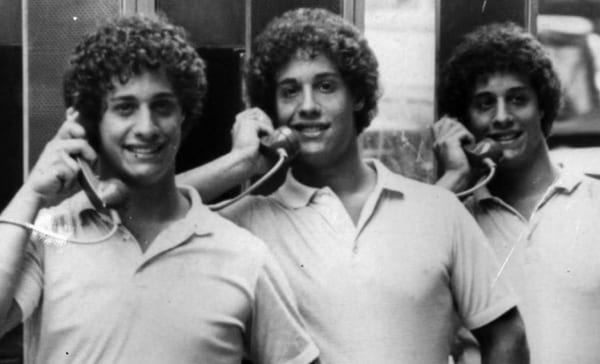Imagine walking into your first day of university and everybody thinks they already know you – or seeing someone who looks exactly like you reunite with their twin on the news…
I’ve always been one for documentaries – there’s just something about knowing that what you’re watching is fact and someone is actually living in that reality. Three Identical Strangers caught my eye when it popped up on in Netflix’s ‘recently added’ category because of its blurb, which read: “When three identical strangers meet by chance and discover they’re identical triplets separated at birth, they’re delighted — until their true story emerges”.
How could you not want to click on that? It was amazing in itself that the triplets met, so what more could there be to the story? What was this true story that had been teased?
When Edward (Eddy) Galland, David Kellman, and Robert (Bobby) Shafran met at age 19 in the 80s, their extraordinary tale began.
Eddy and Bobby were the first to meet, and then David saw them in the paper and got in contact. The three brothers shared everything after they met; clothes, jobs, apartments – as well as sharing looks, they shared similar tastes in just about everything.
However, this documentary is so much more than simply a story of triplets being reunited – it addresses issues regarding science practices, adoption agencies and the question of nurture versus nature.
Eddy, David and Bobby were part of an experiment that looked at parenting styles and their effects on a child, by placing identical babies given up for adoption into carefully chosen homes with specific types of parents.
There are a number of lingering questions: is there ever any justifiable reason for separating triplets at birth? What if the reason was in the name of science in the 1960s? What if the reason was to know the psychological needs of children, that have now become common knowledge?
What if despite these reasons, the children suffer from mental illnesses for the rest of their lives as a result of separation anxiety? Would we even know about separation anxiety in children if it were not for this experiment?
It’s a debate that has been going on for the entirety of the three brothers’ lives. More questions of morality arise with the revelations that the parents were not told that the child they had adopted had two brothers. Each of the brothers lived 45 minutes from each other, within a 100-mile radius, and still spent two decades of their lives without each other. A childhood and young adulthood without your sibling is something that can never be replaced, let alone without your two triplet brothers.
What started off as sunshine and daisies shifts into the complicated reality these brothers have lived through. Director Tim Wardle finds the perfect balance in telling a story of joy and reunion that is marred by hurt and conflict, with a tasteful and well-researched portrayal of the lives of the three brothers.
While there is no real end to this tale, what Wardle managed to do was make it evident that even though they are triplets, the brothers are each very much their own, individual person with their own personalities and battles.
This documentary is a must-watch and something you can watch with the whole family.




